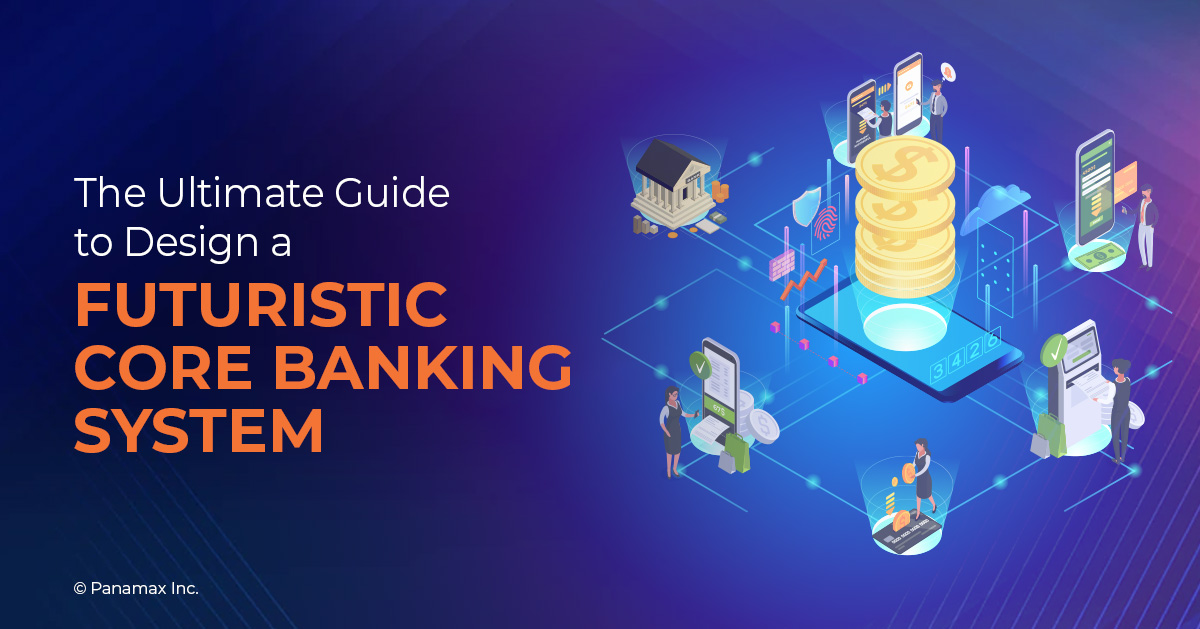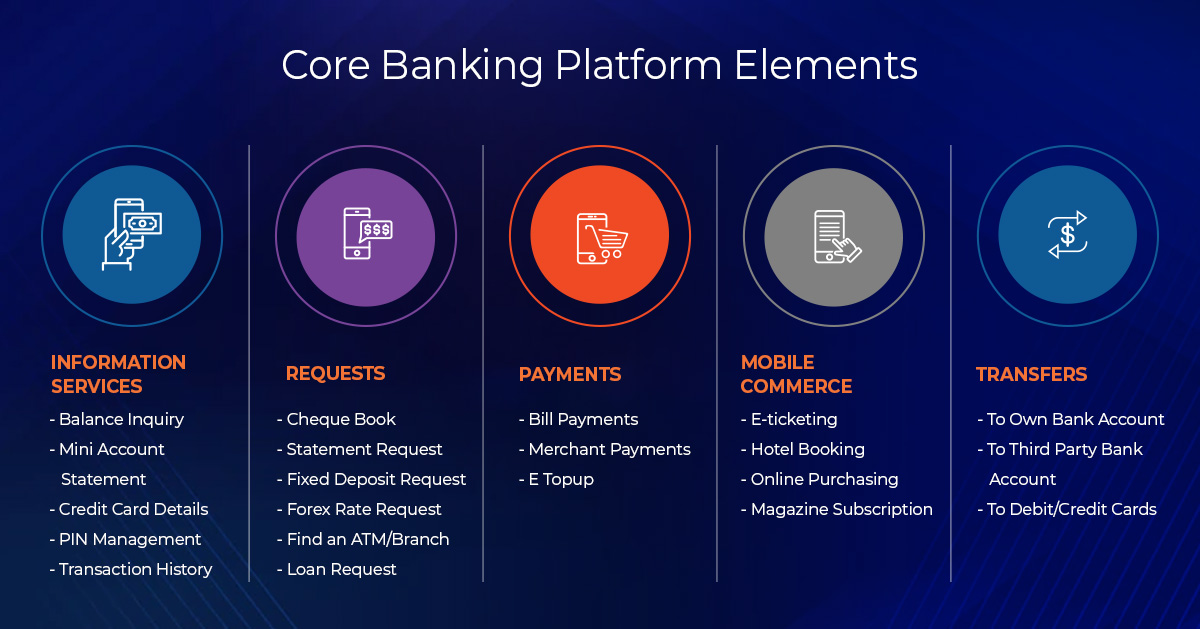Starting with Core Banking System then it is defined as a banking service provided by a networked group of bank branches, through which customers can access their bank accounts and perform basic transactions from any of the member branch offices.
Core banking platforms are considered the lifeline of every bank, and over the past few years, their order in the enterprise IT architecture has become increasingly important. These have been prompted by critical technological changes, shifting customer demands, and the FinTech collaborative landscape.
There is a great need to utilize the next-gen digital core banking platforms for FIs (Financial Institutions) to optimize digital banking services. Talking about Financial Institutions then they are also known as banking institutions, where commercial companies act as a medium in various types of financial monetary transactions. Furthermore, it is also crucial in playing a critical role in significantly enhancing the user experience.
Therefore, here we will discuss the main features that help design an excellent and futuristic core banking system and aid in the business expansion of banks and FIs.
Understanding Next-Generation Core Banking Platform in Brief
The NextGen Core Banking Platform is created to remove the barriers impeding financial institutions' transition to digital banking. It provides a specific platform for financial processing built on a cutting-edge, adaptable, scalable, and open foundation.
Financial organizations have been compelled to use creative strategies to offer their clients better banking services due to the intense competition and cost pressures. The new system emphasizes providing clients with a seamless banking experience across payments, analytics, security, etc.
Next-generation core banking platforms seek to remove obstacles hindering financial institutions to shift to digital banking, by providing financial processing platforms built on cutting-edge, scalable, flexible, and open architectures supported by:
- Technology based on the cloud
- Decoupled and scalable service model-based architectures
- Effective parameterization
- Open APIs that are based on standards to make integration easier
What are the Key Areas where the Traditional Banking Process hinders performance?
Below are the key domains where implementing traditional banking processes can lower overall performance.
- Overall Cost: Unnecessarily high expenses are caused by clunky legacy systems, manual software delivery (manual regression testing and deployment), and low straight-through processing rates (accumulated layers of complexity resulting in fragmented and manual operational procedures).
- Customization: Customers now demand a more customized experience. However, banks frequently store data in numerous product-aligned core systems, which makes it challenging to respond to specific demands. To give one big bank's customers a combined view of savings accounts and investment products, the firm had to invest heavily in a multi-year effort.
- Financial Ecosystem: Future products and services will increasingly depend on partnerships. However, present systems need third-party connectivity to foster innovation (e.g., property-related services for mortgage buyers).
Significant Advantages of Next-Generation Core Banking System
There are many activities through which banks and FIs can take advantage of next-gen core banking platforms. It streamlines the banking procedures and automates them to curtail mistakes due to human intervention.
- Traditional banks can operate at any size while maintaining extensive mainframe and legacy system capabilities. Modern analytical tools are being installed on mainframes by forward-thinking banks.
- Since NextGen core banking systems serve as the focal point for all client interactions, new mainframe capabilities enable a comprehensive predictive analysis of all transactions, including legal service agreements.
- Utilizing the Platforms, a quicker time to market.
- Offer a quicker ecosystem setup.
- The Pay as You Go concept enables businesses to utilize the new platform without being concerned about astronomical costs.
Key Features of the NextGen Core Banking Platform
Banks and FIs can utilize compelling features from the NextGen Core Banking solutions to streamline and automate their banking procedures. The following are the crucial characteristics of the primary banking platform:
Emphatic Data Analysis
The NextGen Core Banking Platform has analytics that allows banks and financial organizations to spot emerging market trends. Institutions can quickly advance in further optimizing their current revenue sources or developing new revenue channels by spotting patterns.
Digital Banking Solutions
Currently, many banking transactions are handled via the internet or mobile banking. Banks must create a secure system while considering the various liabilities resulting from a data leak. The NextGen Core Banking Platform can help banks create a more secure framework, allowing clients to rely on the internet banking system with less concern.
Smooth Chatbot Integration
The NextGen Core Banking Platform enables banks to provide exceptional customer care with round-the-clock support so that clients can access banking assistance whenever and wherever they need it. To accomplish this, chatbot integration has been added to banks’ customer self-care channels, allowing consumers to fix any issues they may have even after business hours. Basic operations like account balance inquiries, credit card statements, pin generation, etc., can be handled by chatbots. Some major benefits of chatbots in the banking sector for customers cover pushing information, saving time, answering queries, and building the economy.
Better Time Management
When doing bank-related evaluations, saving time is very important. NextGen Core Banking Platform seeks to provide the solution by offering real-time check processing. A digital image of the check with a MICR band is created by the core banking system and sent to another bank for processing. This approach eliminates the need for additional physical papers and manual interaction.
List of NextGen Core Banking Element
It is necessary to understand its key elements to design a futuristic NextGen Core Banking platform and its features. Let us have a look:
- Bill Payments: Whether it is bill payment, merchant payments, or online top-ups, the NextGen Core Banking platform must be able to cater to all payment-related services and perform them hassle-free.
- Information Services: Rendering real-time information for essential services such as transactions, account inquiries, balance checks, etc., allows banks or FIs to stay ahead of the competition. Competent Nextgen Core Banking solutions also provide real-time analysis of PIN management, credit card history, etc.
- Smooth Transfers: There must be an easy transfer of money from account, third-party bank accounts, or even to credit and debit cards. ‘
- Banking Process Requests: If the banks and FIs can give streamlined and specific services related to bank statement requests, checkbook requests, loan requests, forex, etc., it is easier for them to enhance user engagement.
Get Seamless Core Banking Solutions with Panamax
Through its cloud-native, regulatory-compliant, and real-time decision-making capabilities, Panamax's Core Banking System transforms the BFSI (Banking, Financial Services, and Insurance) business's banking processes. With the use of the platform, banks and FIs may increase customer loyalty by addressing a range of banking functionalities, including retail, corporate, wealth, and payments. Be future-ready by developing an agile banking model that is connected and practical and gives people access to a cloud-enabled economic environment.
Related Blogs
Digital Core Banking Solutions: A Game Changer?
Core Banking – The Next Gen Digital Banking Suite



















